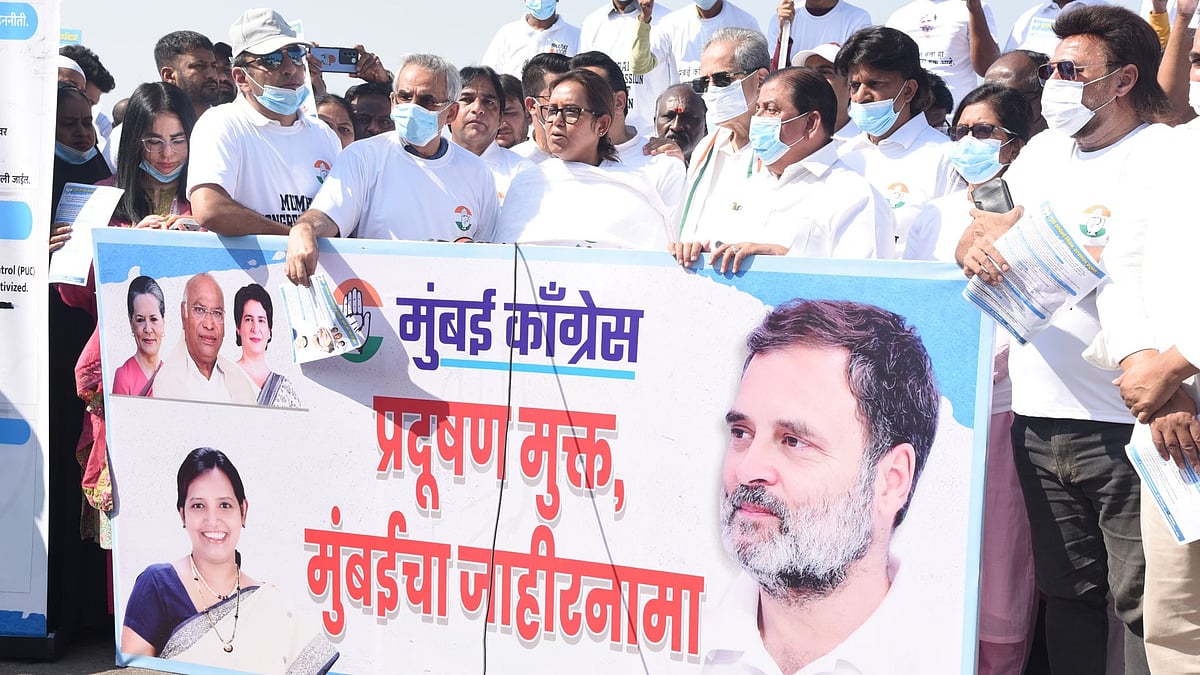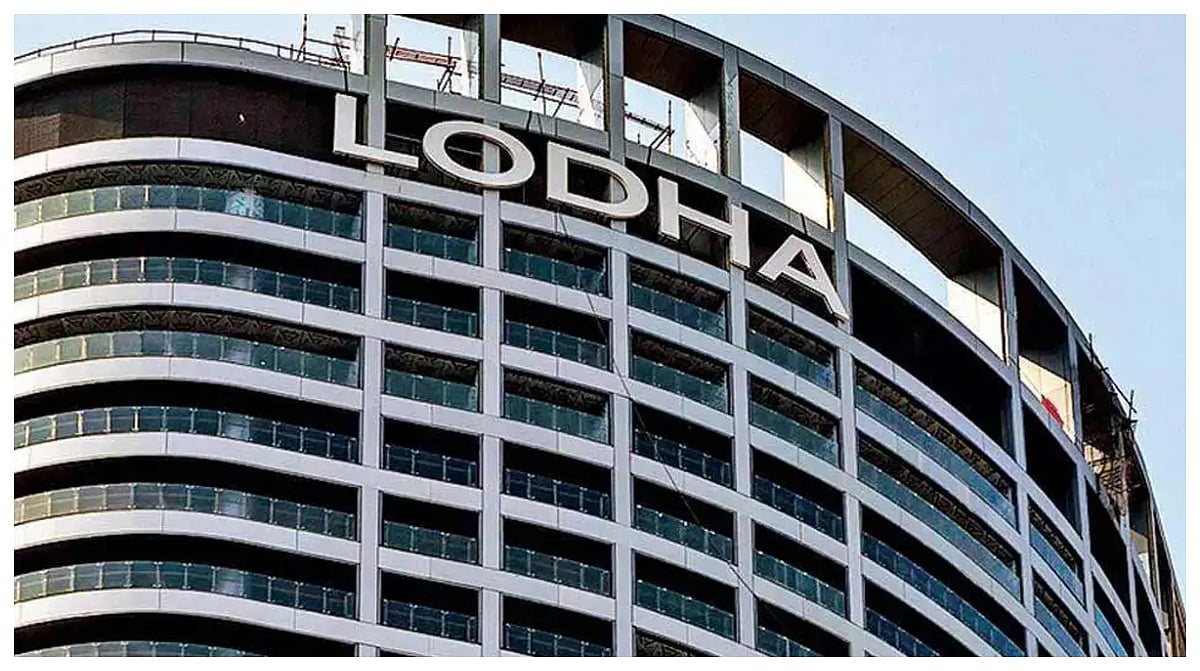The Reserve Bank of India has kept the interest rate unchanged and maintained its accommodative stance with a modest inflation forecast and GDP growth of 7.8 percent in FY23.
India Inc weigh in with their views:
Abhishek Kapoor, CEO, Puravankara Limited
The unchanged REPO rates by RBI is a welcome move. While several industries anticipated an alteration in the rates, the sustained accommodative stance signals the government’s commitment towards housing. We are confident that this decision will enable a larger demographic of consumers to enter the market and invest in real estate. The latent demand for homes will bolster the economy and lead to buoyant consumer sentiment helping the RBI achieve its GDP target of 7.8 percent for FY 2022-23.
Atanu Kumar Das, MD & CEO at Bank of India
Continued policy support commits to durable and broad-based recovery across real segments.
Atul Kumar Goel, MD and CEO, Punjab National Bank
The RBI has decided to keep the benchmark rates unchanged for tenth time in a row with continued accommodative stance in order to revive and sustain the growth recovery as policy is at present required for broad based growth going forward. RBI also expressed that despite uncertainty on global economic front, Indian economy to remain the fastest growing economy in the world. On banking front, the RBI held that the banks in India should continue the process of capital augmentation and also focus on the governance and risk management. RBI expressed sanguinity about the health of Banks’ balance sheets and we believe that the improving capacity utilization aiding investment demand will lead to credit growth.
Anand Nevatia,Fund Manager, Trust Mutual Fund
The FY23 budget is expansionary in nature and has laid out a large borrowing program. While some part of borrowing is to come from Green bonds, markets will look forward to guidance on how RBI will manage the large borrowing program. RBI has also been managing excessive systemic liquidity through VRRR auctions for some time now and there could be some action on more durable withdrawal of liquidity in this MPC. While the reverse repo rate is outside the purview of the MPC, there are expectations that a hike in reverse repo rate by RBI could coincide with this MPC. Given the global backdrop of most central bankers moving away from the extra accommodative monetary stance and hiking key rates, RBI could move to a neutral stance to have the flexibility to hike rates as and when required.
Dinesh Khara, Chairman, SBI
The RBI policy statement is an affirmation to keep the rate structure at reasonable levels to support an incipient growth recovery. Amidst global uncertainties, the policy has provided admirable support to market sentiments and has rightfully indicated it has enough non-conventional measures to keep the demand supply of G-Secs in reasonable balance. The regulatory guidelines of credit default swap and rupee derivatives market will ensure a deepening of markets. The enhancement of cap under e-RUPI could facilitate a faster adoption of digital transactions, that could eventually usher in a roll out of digital rupee.
Dhiraj Relli, MD & CEO, HDFC Securities
The MPC of the RBI decided to keep key rates unchanged at its meet on Feb 08-10 and maintained accommodative policy stance. The outcome was more dovish than most economists expected. Though the intent of the RBI to support the recovery in economy in the face of disruption due to Omicron variant is commendable, economists will now fear whether the RBI will fall behind the curve, having maintained the easy monetary stance longer than most other Central Banks had. The RBI has projected 4.5 percent CPI in FY23 (vs 5.3 percent for FY22), with CPI expected to fall sustainably below 5 percent in Q3FY23. One hopes that the inflation trajectory will soon come under control and the bet of the RBI pays off. Quarterly GDP growth projections remain volatile due to base effect with 4.5 percent growth projected for Q4FY23 compared to 7.8 percent for the whole of FY23. Equity markets may temporarily welcome this decision but will be largely driven by the balance Q3 Corporate results, outcome of state elections and changes in global risk appetite.
DRE Reddy, CEO and Managing Partner, CRCL LLP
It is a welcome move to keep repo rate and reverse repo rates unchanged, reiterating an accommodative stance on both rates and liquidity. The economic growth momentum softens amid pandemic uncertainties, it was likely for RBI to keep the repo rate and reverse repo rate unchanged. The softening of food prices, improving prospects for food grain production and expected easing of vegetable prices on fresh winter crop arrival may give some relief. Increase in crude oil prices is one of the drivers of inflation though inflationary pressure is being set off by tax cuts relating to petrol and diesel. In line with the upcoming CPI expectation, we are hopeful to expect the easing of food prices to continue adding optimism while also ensuring a strong and sustainable economic recovery.
Dr Atul Goel, MD, Goel Ganga Group & President (Elect.), NAREDCO Pune
The RBI objective must be attached to the growth as the past two years were significantly stressful for the country. The RBI policy review might be raising the reverse repo rate as per the suggestions of monetary policy committee, however the important part is to keep the price variation within check for the consumers. The expectation are around 15 to 20 basis points. But overall it would be the RBI way of handling the inflation limits is to be seen rather than the actual conditions prevailing in the country.
Dr D K Srivastava, Chief Policy Advisor, EY India
The accommodative policy stance indicates an emphasis on sustaining and uplifting growth while managing inflation within the tolerance limit. The RBI also gave its assessment of FY23 real GDP growth at 7.8 percent which is marginally below the lower limit of the band of 8-8.5 percent given in the Economic Survey of 2021-22 and well below the IMF’s forecast of 9 percent. RBI’s CPI inflation forecast for FY23 is at 4.5 percent based on the assumption of a normal monsoon during the year. The European Central Bank as well as the US Fed are likely to continue their effort to firm up their policy rates since in these countries, CPI inflation rates continue to be well above recent historical averages. This is largely driven by inordinately high prices of global crude and primary products and continuing supply side bottlenecks. I
Dr Malcolm Athaide, CEO and Co-founder, Agrim Housing Finance
By keeping key rates unchanged and reiterating an accommodative stance, the Reserve Bank of India is signalling that growth is a priority, much in line with the announcements made in the Union Budget presentation. The RBI Governor has stressed upon the need to provide policy support on a durable basis to support growth. What was significant however, was the conservative projection of real GDP growth of 7.8 percent. This is considerably lesser than the market expectation of 8-8.5 percent. This indicates that the apex bank is adopting caution and may choose to opt for aggressive tightening of policy going ahead.
Dr. Soumya Kanti Ghosh, Group Chief Economic Adviser, State Bank of India
The RBI surprised the market with a policy statement that has a lower GDP at 7.8 percent and an inflation forecast at 4.5 percent for FY23. This translates into a WPI projection of around 2.8 percent in FY23. The lower inflation forecast took the market by surprise and the 10-year yield has declined by 10 basis points and is likely to decline further. There are 3 bets that the RBI has taken in its quest for a lower term structure of interest rates. The RBI has also clearly indicated to the market that it is comfortable with making a clear distinction between policy strategy and policy stance and these can coexist simultaneously. While a policy strategy may indicate RBI calibrating the liquidity normalization to ensure that government borrowings face no disruption, the policy stance may still indicate rate adjustment to quell inflation expectations, should inflation surprise on the upside beyond tolerance. These two mutually complement each other as RBI has several non-conventional policy tools to adjust Government borrowings.
Harish Prasad, Head Of Banking, India, FIS
e-Rupi application has largely been around lower-value Government to Citizen and Corporate to Employee use-cases, and enable delivery of targeted monetary benefits to individuals who are not very digital savvy. The increase of the cap on e-Rupi vouchers from the present Rs. 10,000 to Rs 1 lakh is a significant jump, and it appears that the purpose is to address some practical issues with the lower current cap, and to broaden the applicability to a much larger set of use-cases which can involve amounts all the way up to Rs 1 lakh. With this, the scope of application of e-Rupi vouchers expands and deepens significantly across the board – be it targeted delivery of benefits/assistance to SMEs, medical benefits to citizens, or corporates offering benefits to employees. With expansion of e-Rupi acceptance, this also has the potential to make inroads into certain areas addressed by gift-cards and it would be interesting to watch out for a possible link, at some point, between the proposed Digital Rupee and the e-Rupi programs.
Heena Naik, Research Analyst - Currency, Angel One Ltd
Due to the highly contagious Omicron variant, there has been some loss of momentum in economic activity. However, there is a possibility of revival in the future from buoyant Rabi prospects, robust export demand, accommodative monetary and liquidity conditions, improving credit offtake, and the continued push on capital expenditure and infrastructure in the Union Budget 2022-23. Real GDP growth is projected at 7.8 percent for 2022-23 with Q1:2022-23 at 17.2 percent; Q2 at 7.0 percent; Q3 at 4.3 percent; and Q4 at 4.5 percent.
HP Singh, Chairman & Managing Director, Satin Creditcare Network Limited
Considering inflationary concerns, the central bank’s decision to maintain a status quo on interest rates- keeping the repo rate unchanged at 4% and the reverse repo at 3.35% - is a welcome move, and so has its decision to continue to maintain an accommodative stance. Expectations were that RBI would hike the reverse repo rate to lower excess liquidity flushed into markets owing to the pandemic. Also, the RBI Governor Shaktikanta Das’ forecast of growth coming in at 7.8 percent in FY23 is another reason for a bullish view going forward. This, coming soon after the boost to the fintech industry in Budget 2022 – with an increased focus on financial inclusion by enhancing the banking and infrastructure framework in the country, among other aspects, gives us reason for increased optimism.
Indranil Pan - Chief Economist, YES BANK
The RBI has provided the market with a very dovish policy –more so than expected by market. Growth concerns continue to play a bigger role than inflation for RBI. In terms of its forecasts on inflation, RBI indicates a glide path for inflation going down to the 4% handle in Q3 and Q4 FY23. While the RBI contends that the growth momentum remains positive, the stance however indicates that the RBI is willing to wait longer to see the growth becoming durable and sustainable. For now, the RBI has decoupled itself with the monetary policy momentum in the rest of the world, where higher inflation prints are leading to central banks of the developed economies to tighten rates. We believe that RBI may be able to hold back repo rate increases for longer and may not have any compulsion to follow global central banks unless their actions have any severe implication on the USD/INR rates. We foresee 2 repo rate increases in FY23 but predicting a timeline is difficult at this point.
Madan Sabnavis, Chief Economist, Bank of Baroda
There have been no changes in policy rates. An accommodative stance has been maintained even for next year. Lower inflation projected for FY23 at 4.5 percent (we believe this is on the lower side). Growth at 7.8 percent is considered not yet durable. Liquidity management will be through VRR and VRRR. We may, hence, not expect any change in repo rate for at least two quarters in absence of price shock.
Manoj Dalmia, Founder and Director, Proficient Equities Private limited
The Monetary Policy Committee has kept the repo rate unchanged at 4.00 percent keeping an accomadative stance to support growth. The rates have remained almost unchanged for the past 10 sessions.The reverse repo rate is unchanged at 3.35% it was expected there would be a change of 15-40 bps to support the budget decision for growth. Increasing Reverse Repo usually signals RBI is ready to pull out excess liquidity, it can be said that it's being done through Variable Rate Reverse Repo. Inflation range is about 2-6 percent.
Mohit Ralhan, Managing Partner, TIW Capital group
RBI has maintained the accommodative stance prioritising economic growth and recovery amidst the global concerns on rising inflation. The good news is that inflation in India looks relatively under control with unchanged CPI inflation forecast of 5.3% for FY-22 and projection of 4.5% for FY-23. Inflation is expected to peak in the current quarter and ease in the second half of FY-23. Till the time inflation remains below RBI’s forecast, the focus will remain on supporting growth. Further, RBI has been proactively managing liquidity through VRRRs and there are no concerns on the liquidity side. Overall, the commentary on economic growth, increasing strength of PSU banks’ balance sheet, financial stability and liquidity is quite positive and RBI has reconfirmed its commitment to protect domestic markets from the impact of global macroeconomic events. The Indian market is expected to respond positively to RBI’s announcements.
Prakash Agarwal, Director and Head – Financial Institutions, India Ratings and Research
RBI stance of status quo could slow down the pace of deposit rate hikes by banks, especially on the shorter end of the tenor while providing momentum to the improved loan growth in the system. Additionally, it could further steepen the yield curve which is already at elevated levels. As the financial conditions has eased, it is been observed that the borrowers both corporates and non-banks have been increasing their CP borrowings. The wide tenor premium may further accelerate this trend.
Prasanna Rao, MD & Co-founder, Arya.ag (integrated grain commerce platform)
RBI’s monetary policy announcement appears to be a balancing act at keeping a check on inflation related aspects while ensuring healthy flow of liquidity. From agriculture ecosystem perspective, the continuity of lower reverse repo rate ensures that there is an inherent need for financial service providers to pursue loan services and this works in favour of small farmers as well as FPOs who therefore have access to larger pool of lending resources. For banks, the existing rates can serve to pursue their priority lending objectives and score high on contributing for a social cause at a profitable proposition.
Prasenjit K. Basu, Chief Economist, ICICI Securities
A key reason to keep the policy interest rate at historic lows longer is to spur a more durable rebound in private consumption. India did not massively boost monetary growth during the worst phase of the pandemic (as the US Fed, ECB and BoE did), so there is less need for the RBI to roll back monetary accommodation this year. As the strong rabi crop boosts food supply in April-June, and other supply disruptions from the Third Wave of the pandemic recede, India’s CPI inflation will moderate, allowing policy rates to remain low for longer than in the developed world. That will provide a boost to equity valuations, and help spur a broad-based recovery in consumption and investment.
Pranay Jhaveri, MD, India and South Asia, Euronet Worldwide
Built on UPI rails, e - Rupi removes friction, works in an offline mode, and enables the large population of people receiving DBT to grow their digital payments footprint. This step of raising the e- Rupi limits to 1 lakh would accelerate DBT dissemination by the Government and allow accrual, ultimately resulting in improved welfare of the underprivileged section of the economy.We have built this capability on our UPI platform and the same can be leveraged by our banking partners.
Radhika Rao, Senior Economist, DBS Group Research.
India’s monetary policy committee left the benchmark rate and corridor unchanged, accompanied by a dovish commentary. Inflation is expected to decelerate, with pockets of concern for growth. Driven by domestics, the RBI’s rate adjustments will trail global shifts. Bank Indonesia kept rates unchanged but remains watchful of US Fed’s moves in March. Omicron impact is a concern. Liquidity normalisation has been set into motion Implications for forecasts: We expect the BI and RBI to raise rates this year, with the latter likely to be less sensitive to the timing of the Fed’s hikes
Rajiv Sabharwal, MD & CEO, Tata Capital Ltd
Contrary to market expectations RBI continues to maintain its rate status quo and accommodative policy stance as well. This will accelerate the growth momentum in the economy. Further, RBI has taken cognizance of the measures taken by the global central banks with respect to tightening of interest rates but remains committed to support sustained economic activity.
The recent spike in crude oil prices and the spill over effect on the inflation trajectory is being monitored closely by the RBI. The softening in food inflation and strong agricultural output will help manage inflation within the comfort corridor of the RBI. The RBI continues to offer assurance to the markets that there will be a rebalance in the overall systemic liquidity on a dynamic basis and aims for a smooth evolution of the yield curve. The bonds market should draw comfort from this measure and alleviate any price volatility concerns.
Reeju Datta, Co-Founder, Cashfree Payments
Currentl, the use of eRUPI is popular for use-cases like disbursal of government benefits, primarily for COVID-19 vaccinations. The former cap of Rs 10k also restricted its use for smaller value use-cases. This cap is now enhanced for government use-cases upto Rs 1 lakh, broadening the scope of eRUPI issue to larger value use-cases. eRUPI’s key benefit for governments is in enabling penetration among the unbanked and feature phone users, allowing issue without needing the recipient’s bank account or KYC. The proposal will further help in the delivery of various government schemes to the beneficiaries more efficiently. In addition to govt issued vouchers, extending this new cap to other B2C use-cases should also be considered, by improving the acquiring infrastructure for eRUPI and integrating it with existing POS systems. This will also encourage its use by private corporates and for other customer segments as well, such as larger value corporate gifting, transit/payroll/student cards, forex travel cards, etc.
Ram Raheja, Director at S Raheja Realty:
After keeping the repo rate and reverse repo rate at a record low of 4.00 percent and 3:35 percent for nearly two; RBI was expected to keep it unchanged till mid-2022. The economy is recovering, and this move ensures sustainable growth would continue to be the focus. Alongside this, the pandemic and lockdown continue to be a hopeful prospect for the real estate sector given it is a safe-haven and tangible asset at the time of crisis. A low home loan interest rate regime has been greatly instrumental in further stimulating India’s real estate sector eventually increasing investment and home-buying in the last two years. The coming quarter continues to remain optimistic for most of the sector ultimately reflecting in the S&P BSE realty index.
Ridhima Kansal, Director, Rosemoore
The RBI's decision to maintain repo and reverse repo rates at current levels indicates their growth-oriented stance. While inflation continues to be on the higher side and the Indian economy has caught up on an upward growth trajectory after the pandemic-driven crisis, such an outlook by RBI indicates their positive and healthy outlook on the immediate future of the country's economy. No wonder, the resilience of the common man has helped and the central bank seconds it with its positive outlook reflected in the status quo of the monetary policy.
Sandeep Bhardwaj, CEO, Retail, IIFL Securities
The RBI Monetary Policy maintained status quo on repo rates but surprisingly it decided not to touch reverse repo too. Stance of the Monetary Policy remains accommodative meaning the RBI and the government still want to prioritize economic recovery above all else.
Sandeep Bagla, CEO, TRUST Mutual Fund
Economics is all about making choices. RBI has chosen to prioritise growth over inflation. Given the expansionary budget, high oil prices, and elevated inflationary expectations, market players were expecting the beginning of the rate hike cycle in India. In the US, economists are expecting the US Fed to raise rates between 5 to 7 times this calendar year. By keeping all key rates unchanged, RBI has displayed confidence that India can remain isolated from global monetary trends. RBI's average expectation of inflation at 4.5 percent in the FY22-23 is interesting. Bond yields should remain low given that they had risen in expectations of rate cycle reversal. RBI's status quo is a brave step, which could lead to an unpredictable reaction from the investor community in the longer run.
Shanti Ekambaram, Group President - Consumer Banking, Kotak Mahindra Bank Ltd.
The RBI’s monetary policy committee (MPC) has continued with an “accommodative stance” while maintaining status quo on key rates. The RBI has signalled that it will continue to support economic growth as long as required. Policy outlook is stable but the narrative is slightly different from what the markets had expected. The real GDP growth for FY23 - seen at 7.8 percent - seems conservative. Retail inflation is expected to peak in Q4 FY22 to 5.7 percent. However, it is likely to glide down over the next few quarters and is projected at 4.5 percent in FY23. While risks of higher crude prices remain, overall growth and inflation is estimated to be stable through FY23.
Shishir Baijal, Chairman & Managing Director, Knight Frank India.
At this critical juncture when the economy is just recovering from the instability caused by the third wave of pandemic, RBI’s decision to keep the policy interest rate unchanged is a welcome move. There are still lingering growth concerns in the economy and RBI’s accommodative monetary policy stance will be supportive of growth. The housing market has been showing a healthy bounce back from the covid crisis and low interest rates will help in improving affordability and sustaining the growth momentum. The sustenance of housing market recovery will have a strong multiplier effect on overall economic growth.
Shruti Aggarwal, Co-Founder, Stashfin
The RBI's decision of maintaining balance between economic growth and inflation by keeping a status quo on interest rates is definitely based on the pulse of Indian citizens and economy. It's very challenging to find a sweet spot and it seems to be in-sync with the market and should further help keep inflation below 6 percent. Indian startups and fintech industry is also all set to grow faster than anywhere around the globe and this accommodative policy will further boost the confidence.
Siddharth Maurya, market expert (Real estate and fund management)
The RBI has maintained an accommodative stance and kept the repo rates unchanged. However, as inflation is under control, RBI could have thought to lower the rates by 25 to 50 basis points. In the last 2 years, RBI has been maintaining an accommodative stance and slashed rates, which has been instrumental in setting the stage for higher economic growth. RBI should take a cue from the past actions and continue with further measures to support spending and spurred growth.
Siraj Saiyad, Director, ARETE Group
It is for the tenth time in a row that RBI kept the key policy rates unchanged at 4 percent. The unchanged repo rates will help maintain status quo on the prevailing low interest rate regime for some more time. With this move the environment for affordability will move well for the home loan borrowers. Another decision of RBI to increase mandate limit from Rs 1 crore to Rs 3 crore for trade credit to MSMEs is likely to mitigate the impact of the pandemic on the sector.
Suvodeep Rakshit, Senior Economist, Kotak Institutional Equities
The RBI remained dovish and continued to support growth as it kept policy rates and stance unchanged. We believe that it would have been opportune to start policy normalization with atleast a 20 bps hike in reverse repo without much of market impact. However, today’s policy risks sharper adjustments if inflation risks materialise. Inflation risks, especially from fuel prices, remains a concern and can materialize relatively soon. Compared to RBI estimates, we estimate FY2023 GDP growth 30 bps higher at 8.1 percent and FY2023 CPI inflation 50 bps higher at 5 percent. We believe it would be opportune to increase reverse repo rate hike by 40 bps in the April policy.
Suyash Choudhary, Head – Fixed Income, IDFC AMC
The February policy review kept all rates unchanged as well as the accommodative stance maintained, with the usual one dissent. It was more dovish than market assessment in 1> not taking any step whatsoever towards corridor normalization (no hike in reverse repo rate), 2> providing some line of sight that the accommodative stance may continue for a while, and 3> sounding quite dovish on the growth – inflation assessment (second half FY23 inflation forecast seems much below market expectations).
Niraj Kumar, Chief Investment Officer, Future Generali India Life Insurance
Overall an Ultra Dovish Policy with an overarching focus on ‘’Durability of Growth”. The dovish verdict comes at a time when the MPC is juxtaposed with a higher than expected government borrowing in FY23 and has chosen to stay put and not react to the incumbent global and domestic pressures warranting for maneuvering of the monetary policy. Belying the market expectations of a reverse repo rate hike, MPC has continued with its effective stealth tightening by way of Variable Rate Reverse Repo (VRRR’s) and has chosen to preserve its ammunition for later, and play the waiting game for now. While the lower Inflation forecasts coupled with the accommodative status quo have imparted short-term respite to the reeling bond markets post the Union Budget, we reckon the upside risks to Inflation may have been downplayed by MPC.
Rajee R, Chief Ratings Officer, Brickwork Ratings
In line with BWR’s expectations, RBI continued its dovish stance and remained accommodative by reiterating that despite the economic recovery and aggregate demand gaining traction and improving inflation outlook, continued policy support is warranted to support domestic growth, which is the highest priority. Continuing with its calibrated liquidity management policy to maintain financial stability, RBI emphasized that VRR and VRRR would be the main tools for liquidity adjustment indicating gradual policy normalization on the liquidity front. While stating that headline inflation will peak in Q4 of the current fiscal, RBI maintained its inflation projections at 5.30 percent for FY22 and a dovish forecast at around 4.50 percent thereafter. Enhancement of cap and multiple-use under e-RUPI prepaid digital voucher, new credit default swap (CDS) guidelines (to be announced today) and extension of on tap liquidity for emergency health services and contact intensive sectors till June 30, 2022, are welcome steps. Hiking of limit under Voluntary Retention Route (VRR) scheme from Rs. 1.5 lakh crore to Rs. 2.5 lakh crore will provide additional sources of capital for domestic debt markets and government securities. Increase in NACH mandate from Rs 1 crore to Rs. 3 crore for TReDS related settlements are expected to improve the receivables financing and overall liquidity position of the MSMEs.
Raghvendra Nath, MD of Ladderup Wealth Management Private Limited
The announcements were in line with our expectations. Post-growth-oriented budget announcement it was necessary to maintain a conducive environment that would support the growth. Our economy is still at a stage where a lot of our industries are inching back to normalcy from the pandemic and any rate hikes at this stage could have hindered with their recovery especially for the small and medium enterprises where they need access to cheap capital to be back on track. The GDP growth forecast for FY23 of 7.8 percent along with the inflation forecast of 4.5 percent, would result in a Nominal GDP growth of 12.5 percent for FY23 indicating strong economic recovery. Though with oil trading around $90 and projections of further price increases, it would be interesting to see the impact of oil on inflation, especially as the inflation is not only being affected by supply side challenges but also from demand side. We believe that in near term, businesses will continue to benefit from lower interest rates and high liquidity in the system, especially those businesses with capex in pipeline.
V Swaminathan, CEO, Andromeda and Apnapaisa
Keeping the rates unchanged is a signal that growth is being prioritised over all else. It remains to be seen what happens over the next quarter but clearly an unto pirates but welcome step.
Vikash Khandelwal, CEO, Eqaro Guarantees
After a Capex-heavy Union budget, the RBI has stayed the development course by maintaining the status quo. While the expectations were on the hawkish side, the unchanged repo rate and policy stance are welcome. The special dispensation for the contact-oriented segment will be a further boost. The RBI not considering the rising inflation as a worrying factor has provided support to the bond market. Staggered withdrawal of liquidity measures will help the market adjust itself to changing scenarios. The hike in the limit for trade credit for MSMEs from Rs 1 crore to Rs 3 crore will support a segment that's a key contributor to the economy.
YS Chakravarti, MD & CEO, Shriram City Union Finance
The MPC’s unanimous vote to keep key policy rates unchanged is encouraging for credit growth which has been lagging at FY19 levels. The accommodative stance by the RBI will support economic activity, which is slowly getting back to normal. The Capex cycle is about to unfold, driven by the Union Budget 2022 infra spends and all-time low-interest rates will be supportive. The MSME segment, which forms the bulk of our loan book, has weathered the effect of COVID-19, and with the rising cost of raw materials, the low cost of funding will enable a faster return to profitability. Festive demand for 2-wheeler loans hit a record for SCUF; we expect the momentum to continue into 2022, as long as COVID doesn’t play spoilsport.
Y Viswanatha Gowd, MD & CEO, LIC Housing Finance
As the housing sales across major cities are at an all-time high, the unchanged policy rates will continue to invoke a sense of optimism for home and property buyers. The policy rates have remained unchanged for the 10th time in a row and we expect the low home loan interest rate regime to continue for some more time. All this augurs well for the sector and will boost sentiments further.
Zarin Daruwala, Cluster CEO, India and South Asia markets (Bangladesh, Nepal and Sri Lanka), Standard Chartered Bank, said,
The MPC decision to hold rates is a testament to RBI’s pro-growth stance. Coupled with last week’s expansionary Union Budget, RBI’s decision to remain accommodative for as long as needed, augurs well for India’s economic recovery and also for its journey towards becoming a $5 trillion economy. The decision to hold rates will cap borrowing costs and will also aid credit delivery.
The extension of liquidity facilities for healthcare service and other contact intensive sectors will provide much needed relief for these crucial sectors. The enhancement of the Voluntary Retention Route (VRR) limit for FPIs from Rs. 1.5 lakh crore to Rs. 2.5 lakh crore should attract sustainable flows into the debt segment. Opening up of the local currency Credit Default Swap (CDS) market and allowing domestic banks to participate in the Foreign Currency Settled-Overnight Indexed Swap (FCS-OIS) market are positive steps towards a more vibrant derivatives market and will provide new hedging solutions for onshore participants. Enhancement of e-RUPI voucher limit from Rs 10 thousand to Rs 1 lakh and allowing these to be used multiple times should allow better delivery of Direct benefit transfer (DBT) benefits. Also, augmentation of the NACH limit from Rs. 1 crore to Rs. 3 crore should improve operational flexibility for Trade receivables discounting system (TReDS) platform.”









